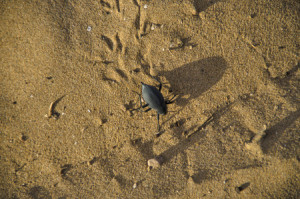The Desert Beetle Could Save Humanity From Extinction

Although water may seem abundant in the modern world, there are some large regions in the world where water is nearly non-existent. For example, the Namib desert in Africa is the hottest and driest desert on earth. This desert only receives twenty millimeters of rainfall per year, and this is only near the coast. Since water is a requirement for just about every form of life, one has to wonder how animals survive in these extremely arid desert regions. Not surprisingly, in the sixteen hundred kilometer long Namib desert there exists very few forms of life. The organisms that do dwell within this desert are well adapted to the harsh conditions. The Stenocara beetle is perhaps the best adapted lifeform now inhabiting the Namib desert. An interesting adaptive feature allows Stenocara beetles to extract water from the atmosphere. Scientists studying this creature’s water-harvesting abilities believe that humanity could benefit greatly by resorting to similar water-extraction methods.
There are a lot of environmental problems in the world today. But the rapidly decreasing water supply may be the most troubling of all ecological issues. If climate change leads to future long-lasting drought conditions, then water will become a precious resource. In order to prevent such future scenarios, researchers have been attempting to develop new methods of water production. The Stenocara beetle may be the key, as this insect can use its specially designed wings to convert moist air into water droplets. Researchers are now hoping to create a synthetic version of this beetle’s wings in order to procure water in the same way. Surprisingly, this beetles ability to harvest water from moist air was first described as recently as 2001.
The only form of moisture that ever reaches the Namib desert comes in the form of fog. This fog is blown into the desert from the Atlantic Ocean. The Stenocara beetle never misses an opportunity to convert this fog into water droplets. This method of harvesting water has allowed Stenocara beetles to thrive in the Namib desert for millions of years.
Do you believe that synthetically mimicking the Stenocara beetle’s wings is the most sensible way to produce water in an increasingly dry climate?
